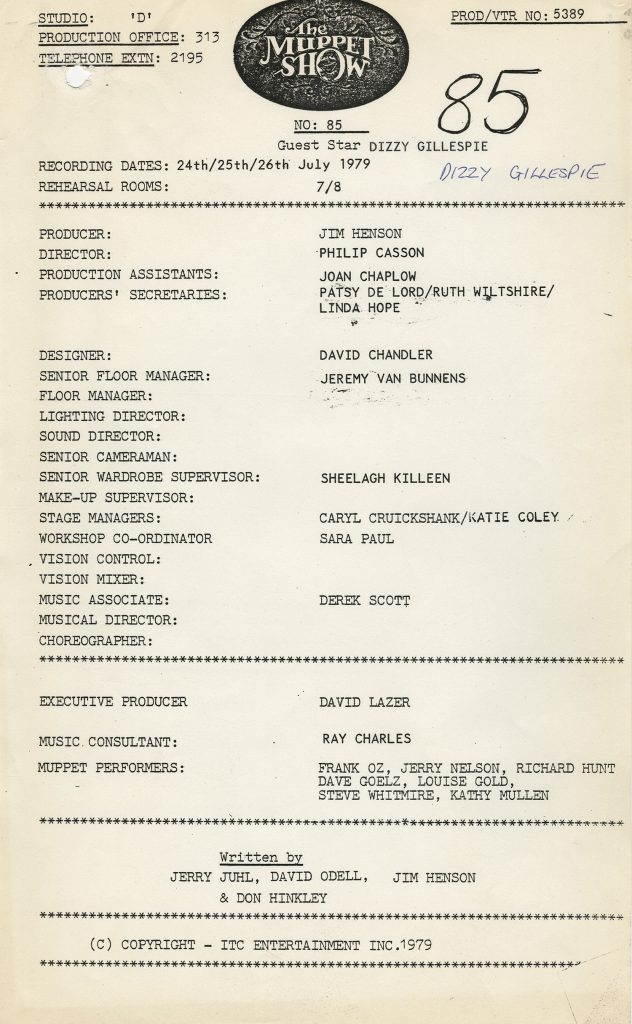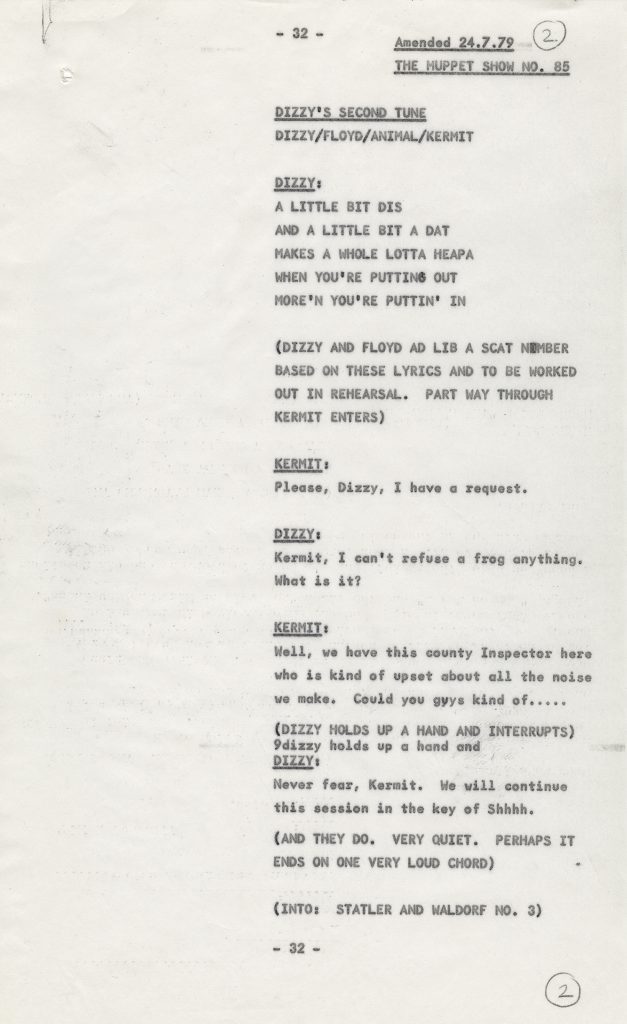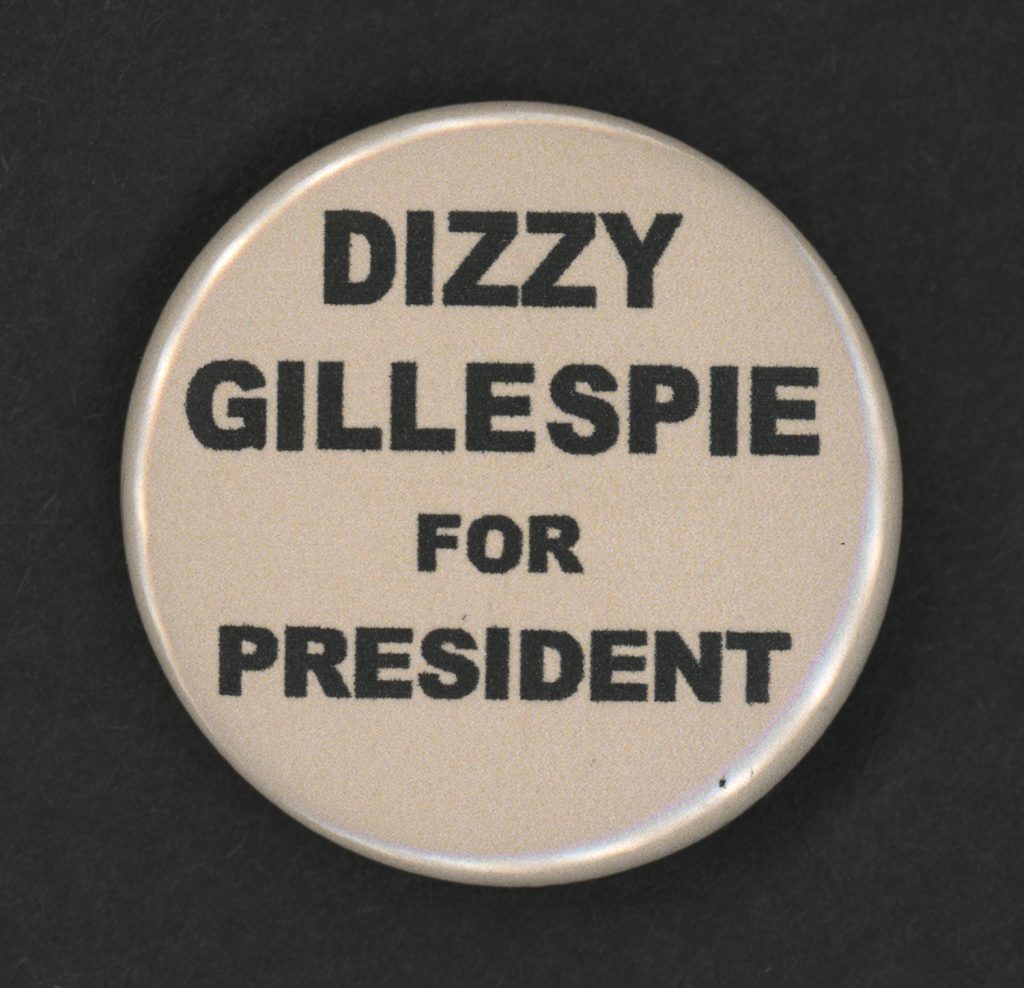Dizzy Gillespie
Beyond the Cheeks: Dizzy Gillespie (1917-1993) as a Cultural Icon
From running for president to hosting The Muppets to snake charming in Pakistan, how does one musician do so much in a single lifetime? Famous jazz trumpeter John Birks “Dizzy” Gillespie influenced the development of bebop music in the mid-1900s and ended up a cultural icon in the process. Known for his big personality and puffy cheeks, Gillespie brought jazz to international diplomacy and stood up for social causes at home in the United States, garnering millions of fans worldwide in his globetrotting career.

Katsuji Abe
[‘Manteca’/Dizzy Gillespie]
John Birks “Dizzy” Gillespie Collection
MSS.1000
Vanderbilt University Special Collections
Born in Cheraw, SC, John Birks “Dizzy” Gillespie grew up in a family of musicians. His father was an amateur bandleader who kept all the band’s instruments inside the Gillespie’s home for fear that the other members might steal them, even knocking down a wall of their home to bring in a piano. It was on this piano that Dizzy first began his musical journey. After the death of his father, and with encouragement from his 3rd grade teacher Alice Wilson, he taught himself to play trumpet for the school band. Following his family’s move to Philadelphia, Dizzy landed his first professional gig playing trumpet in Frankie Fairfax’ band. Soon after, he met Charlie Parker while performing at jam sessions in New York clubs, and together the pair would be responsible for inventing bebop.
Sold as a postcard, this print of Dizzy captures some of the characteristics he is popularly remembered for: his bent trumpet, the origin story of which has never been settled; and his puffy cheeks, which developed accidentally from never being taught proper trumpet playing technique.

[The Dizzy Gillespie edition of The Muppet Show]
Script, July 1979
John Birks “Dizzy” Gillespie Collection Vanderbilt University Special Collections

Dizzy was featured on The Muppet Show Episode 4.13, in 1980, an appearance which brought him in front of a larger public audience than ever before. In that year, an estimated quarter billion people watched the Muppet Show across 100 countries. His warm personality stuck with both domestic and international audiences. Dizzy was known for his charming and friendly personality. As his friend and jazz historian Maxine Gordon has said about Dizzy, “he saw no class,” and made a point to treat everyone with the same respect.
Notice on the second page the endearing interaction between Dizzy and Kermit. After starting his second tune, Kermit kindly asks Dizzy if he can play a little quieter because the county inspector is visiting. Dizzy tells Kermit to never fear, they will continue “in the key of Shhh.”

[Snake Charmer]
Dizzy’s Scrapbook of the Middle East Tour of 1956 #2
John Birks “Dizzy” Gillespie Collection
Vanderbilt University Special Collections
Dizzy headed the first U.S. State Department Jazz Ambassador tour in 1956. While hired for the Cold War propaganda value of having a Black artist represent the United States internationally, Dizzy successfully negotiated his own more preferential terms for the tour. Beyond ensuring that his band included women musicians and was racially diverse, Dizzy also broke from State Department itineraries to indulge himself and his band members.
During his travels, Dizzy was exposed to the varied musical cultures of the Middle East and North Africa. Like when snake charming in Pakistan, Dizzy had a love of learning new musical languages that he carried throughout his career. Later in his life, he would be instrumental in introducing Afro-Caribbean beats to United States’ jazz, having picked up the styles while touring the Caribbean and South America.

Kermit Muppet
Doll
John Birks “Dizzy” Gillespie Collection
Vanderbilt University Special Collections
The Muppet Show protagonist with the catchphrase “Hi-ho, Kermit the Frog here!”
Dizzy loved his time on The Muppet Show just as much as audiences loved his appearance. For the decade after Episode 4.13 aired until his death, Dizzy was frequently seen wearing his Kermit the Frog sweatshirt. The smiling portrait of Kermit always matched Dizzy’s cheerful demeanor.
Dizzy’s appearance with Kermit also brought him recognition outside of the jazz music scene. In public, he would be recognized for being the green frog’s guest star. On one occasion, young fans asked him “show us the cheeks” – Dizzy obliged in exchange for a free meal.

“Dizzy for President”
Button
John Birks “Dizzy” Gillespie Collection
Vanderbilt University Special Collections
Dizzy’s bid for president was aimed to address the rampant racial injustices in the U.S. Though he knew he didn’t really have a shot at becoming president, Dizzy prolonged the campaign, reasoning in his autobiography that “the proceeds from the sale of buttons went to CORE, SCLC (Southern Christian Leadership Conference) and Dr. Martin Luther King, Jr., and I could threaten Democrats with a loss of votes and swing them to a more reasonable position on civil rights.” In the end, the triumphant ‘64 candidate, Lyndon B. Johnson, would sign the Civil Rights Act that prohibited racial discrimination.
The campaign truly launched at the 1963 Monterey Jazz festival, where his set was recorded and released on the album “Dizzy for President.” His famous song “Salt Peanuts” was reprised as “Vote Dizzy” and became the official campaign song. If elected, Dizzy vowed to rechristen The White House as “The Blues House,” and to have such names as Duke Ellington as Secretary of State, Malcolm X as Attorney General, and Thelonius Monk as Traveling Ambassador.
